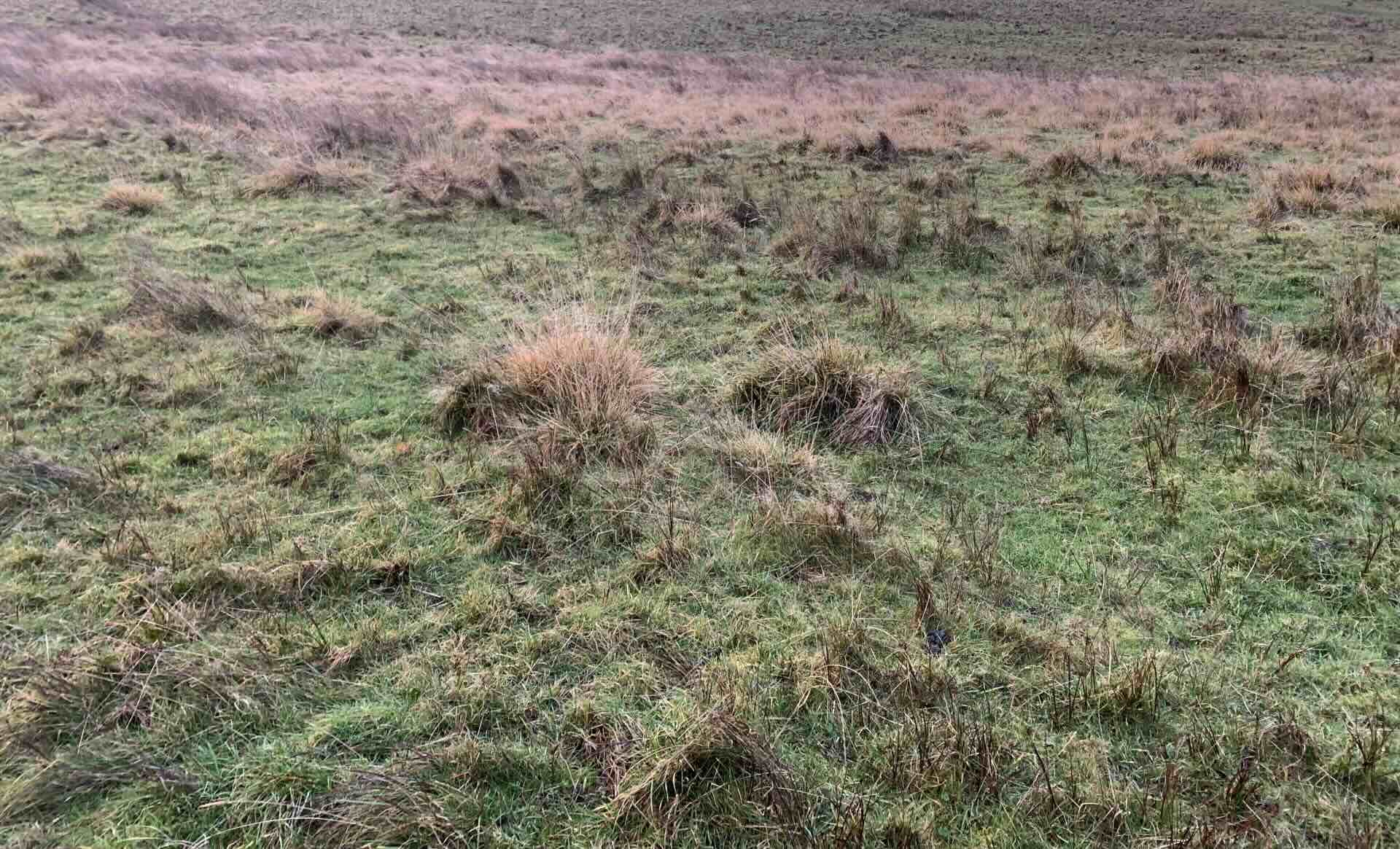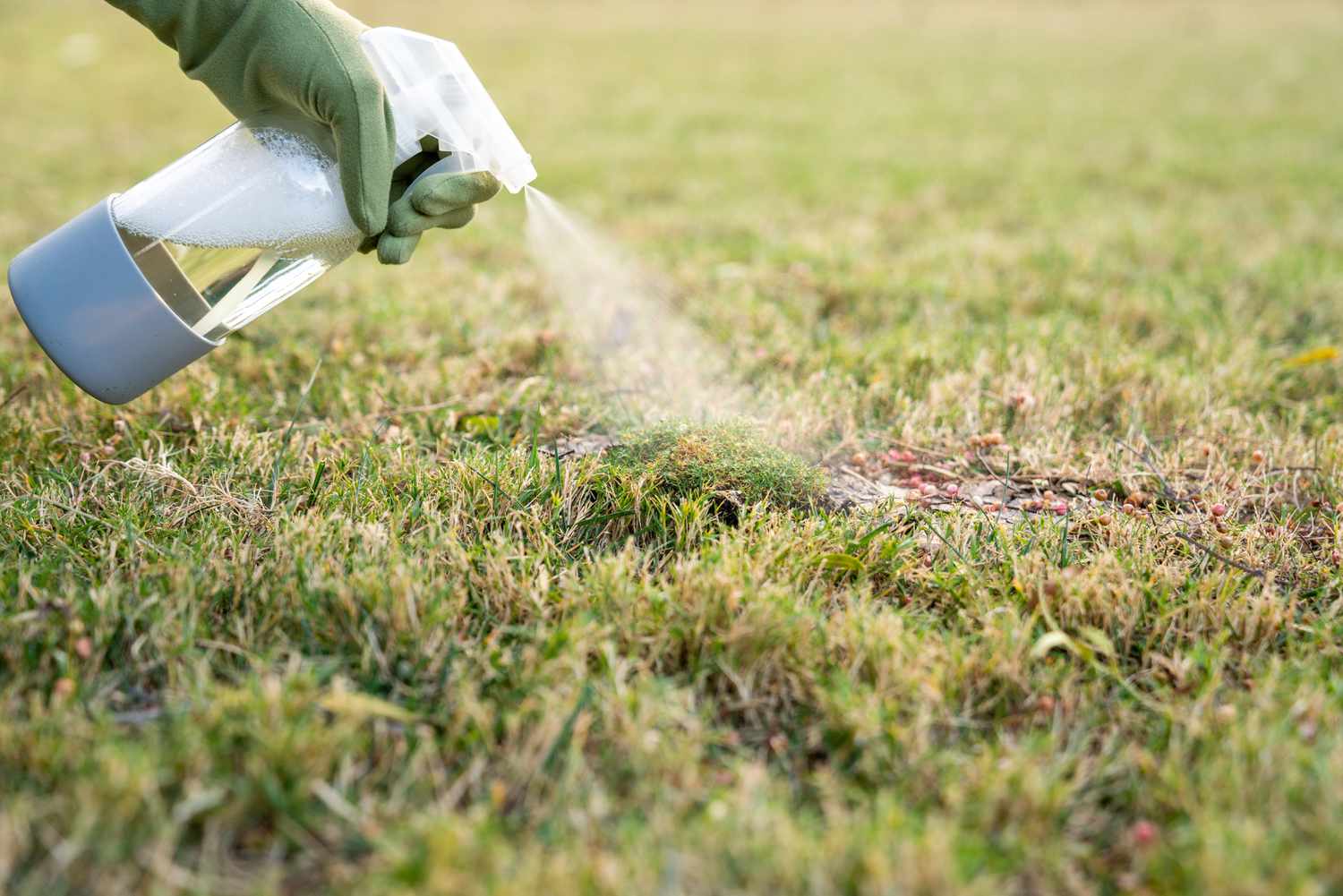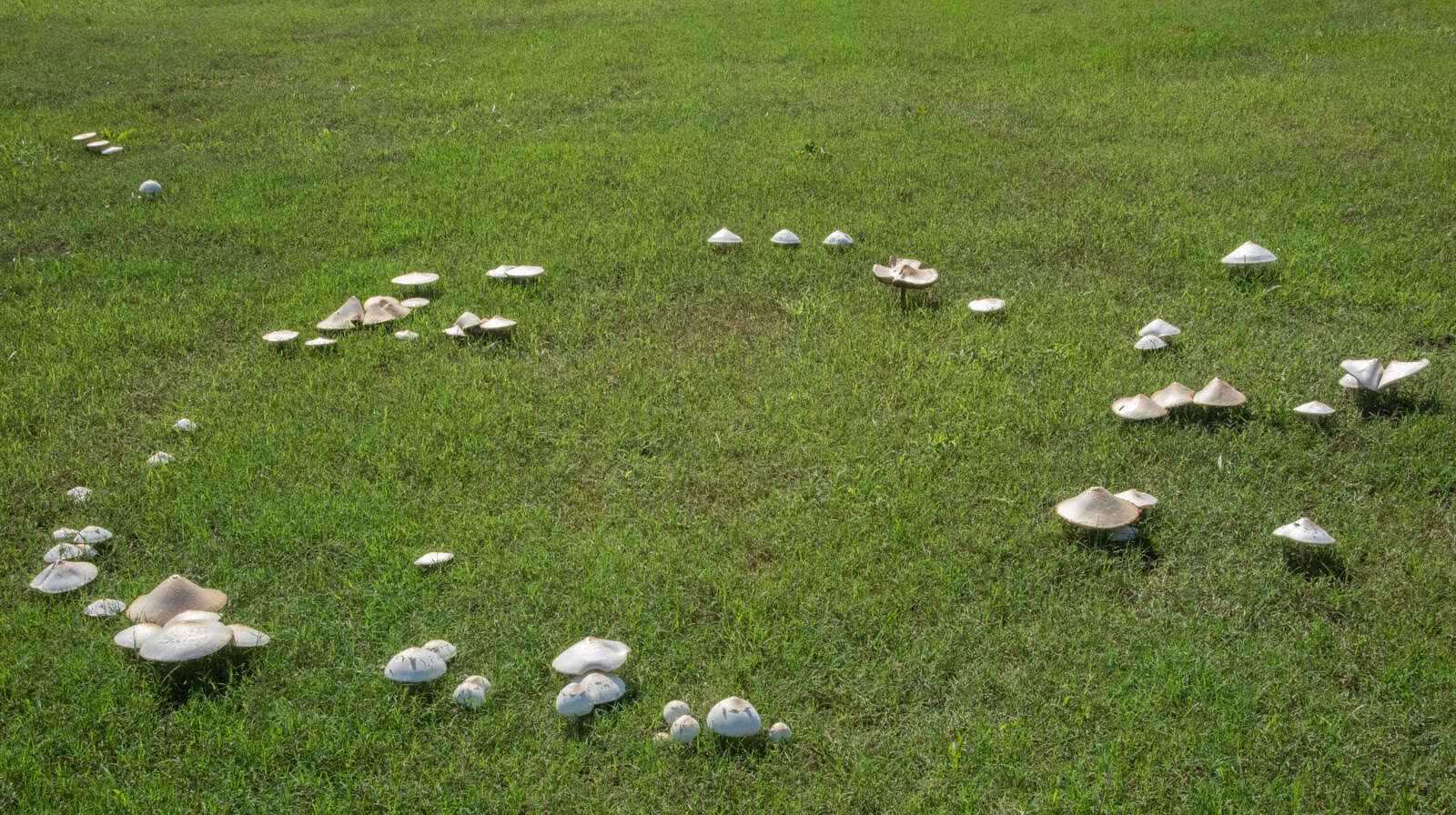Home>Gardening & Outdoor>Landscaping Ideas>How To Get Rid Of Tufts Of Grass In Lawn


Landscaping Ideas
How To Get Rid Of Tufts Of Grass In Lawn
Modified: February 18, 2024
Learn effective landscaping ideas to eliminate tufts of grass in your lawn. Discover expert tips for achieving a flawless, well-maintained yard.
(Many of the links in this article redirect to a specific reviewed product. Your purchase of these products through affiliate links helps to generate commission for Storables.com, at no extra cost. Learn more)
Introduction
Dealing with tufts of grass in your lawn can be a frustrating and persistent issue for many homeowners and garden enthusiasts. These unsightly clumps of grass disrupt the uniformity of your lawn, detracting from its overall aesthetic appeal. However, with the right approach and techniques, you can effectively eliminate these tufts and restore the lush, even expanse of green that you desire.
In this comprehensive guide, we will explore various methods for removing tufts of grass from your lawn, ranging from manual techniques to chemical solutions. Additionally, we will delve into preventive measures to inhibit the regrowth of these stubborn tufts, ensuring that your lawn remains pristine and free from these unwelcome intrusions.
By understanding the underlying causes of tufted grass and implementing targeted strategies, you can reclaim the beauty of your lawn and create an inviting outdoor space for relaxation and enjoyment. Let's embark on this journey to transform your lawn into a verdant oasis, free from the unsightly presence of tufts of grass.
Key Takeaways:
- Say goodbye to unsightly tufts of grass in your lawn by hand pulling, digging, or using a sod cutter. Restore your lawn’s lush appearance with manual removal methods and overseeding.
- Keep your lawn tuft-free by mowing properly, aerating the soil, and using balanced watering practices. Prevent tufted grass from returning and enjoy a consistently healthy and vibrant lawn.
Read more: How To Get Rid Of Bad Grass In Lawn
Understanding the problem
Tufts of grass, also known as clumps or patches of dense grass growth, can mar the appearance of an otherwise well-maintained lawn. These irregular clusters of grass often stand out prominently, disrupting the uniformity and smooth texture of the surrounding turf. Understanding the underlying causes of tufted grass is crucial in devising effective strategies for its removal and prevention.
One common cause of tufts of grass in a lawn is the presence of certain grass species that have a tendency to form dense clumps or patches. These grasses, such as tall fescue or certain types of bentgrass, can spread through rhizomes or tillers, leading to the formation of unsightly tufts. Additionally, poor mowing practices, such as cutting the grass too short or infrequently, can contribute to the development of tufts by allowing certain grass species to thrive while others struggle to compete.
Furthermore, environmental factors, such as soil compaction, inadequate drainage, or nutrient imbalances, can create conditions that are conducive to the formation of tufts of grass. Compacted soil restricts root growth and oxygen uptake, leading to uneven grass growth and the emergence of tufts. Similarly, poor drainage can result in waterlogged areas that favor the growth of certain grass species over others, leading to the development of tufts.
In some cases, the presence of tufts of grass may be indicative of an underlying issue with the overall health of the lawn. Pests, diseases, or invasive weeds can disrupt the balance of the lawn ecosystem, leading to the proliferation of tufts in affected areas. Identifying and addressing these underlying issues is essential in effectively managing and preventing the recurrence of tufts of grass.
By gaining a comprehensive understanding of the factors contributing to the formation of tufts of grass in your lawn, you can tailor your approach to address these specific issues. Whether it involves adjusting mowing practices, improving soil conditions, or implementing targeted pest and weed control measures, a nuanced understanding of the problem is the first step towards achieving a tuft-free, vibrant lawn.
Manual removal methods
Manual removal methods offer a hands-on approach to tackling tufts of grass in your lawn, providing a targeted and effective means of eradicating these unsightly intrusions. While manual removal may require physical effort and time, it can be a rewarding and environmentally friendly way to restore the uniformity and visual appeal of your lawn.
Hand Pulling
Hand pulling is a straightforward and direct method of removing tufts of grass from your lawn. This method involves grasping the tuft at its base and gently but firmly pulling it upward to extract the entire clump, including the roots. It is essential to ensure that the entire tuft is removed to prevent regrowth. Hand pulling is particularly effective for smaller tufts or isolated patches of grass, allowing for precise removal without disturbing the surrounding turf.
Digging and Tilling
For larger or more deeply rooted tufts of grass, digging and tilling can be an effective manual removal method. Using a shovel or a garden fork, carefully dig around the perimeter of the tuft to loosen the soil and roots. Once the tuft is loosened, gently lift it from the ground, ensuring that the entire root system is extracted. Tilling the soil in the affected area can help to disrupt the growth of remaining grass roots and promote the integration of new grass seed or sod.
Read more: How To Get Rid Of Orchard Grass In Lawn
Sod Cutter
In cases where tufts of grass have spread extensively or formed dense patches, a sod cutter can be employed to remove the affected turf. A sod cutter is a specialized tool that cleanly cuts through the turf, allowing for the removal of large sections of grass and soil. By systematically cutting and removing the affected areas, you can create a blank canvas for reseeding or laying new sod, effectively eliminating tufts of grass and rejuvenating the appearance of your lawn.
Overseeding and Reseeding
Following the manual removal of tufts of grass, overseeding or reseeding the affected areas can help to promote the growth of new, healthy grass that will fill in the spaces left by the removed tufts. Overseeding involves spreading grass seed over the existing lawn, while reseeding entails preparing the soil and planting new grass seed in the affected areas. This method not only helps to prevent the regrowth of tufts but also contributes to the overall revitalization of your lawn.
By employing these manual removal methods, you can take proactive steps to eliminate tufts of grass from your lawn and restore its lush, uniform appearance. While manual removal may require physical exertion, the results are well worth the effort, providing a natural and sustainable solution to the challenge of tufted grass in your outdoor space.
Chemical removal methods
Chemical removal methods offer an alternative approach to eradicating tufts of grass in your lawn, providing a targeted and efficient means of addressing persistent or widespread infestations. While manual removal methods rely on physical labor and precision, chemical solutions can offer a systematic and comprehensive way to manage tufted grass, particularly in larger or hard-to-reach areas.
Selective Herbicides
Selective herbicides are formulated to target specific types of grass while sparing desirable turf species, making them a valuable tool for addressing tufts of grass in lawns. These herbicides contain active ingredients that effectively suppress the growth of certain grass species, such as tall fescue or bentgrass, without harming surrounding turf. By carefully applying selective herbicides to affected areas, you can systematically control and eliminate tufts of unwanted grass, restoring the uniformity and visual appeal of your lawn.
Read more: How To Get Rid Of Water Grass In A Lawn
Non-Selective Herbicides
Non-selective herbicides offer a broad-spectrum approach to weed and grass control, making them suitable for managing extensive or persistent tufts of grass. These herbicides are designed to target and eliminate all vegetation they come into contact with, making them particularly effective for clearing large areas affected by tufted grass. When using non-selective herbicides, it is crucial to apply them with precision to minimize the impact on desirable turf and surrounding plants. Additionally, reseeding or sodding may be necessary in treated areas to restore the lawn's coverage and aesthetic quality.
Pre-Emergent Herbicides
Pre-emergent herbicides can be employed as a preventive measure to inhibit the germination and establishment of tufted grass and other unwanted vegetation. By applying pre-emergent herbicides at the appropriate times, typically in early spring and fall, you can create a barrier that impedes the growth of grass seeds and prevents the formation of new tufts. This proactive approach can help maintain the integrity and uniformity of your lawn, reducing the need for reactive measures to address established tufts of grass.
Post-Emergent Herbicides
Post-emergent herbicides are designed to target and eliminate actively growing tufts of grass and other weeds. These herbicides are applied directly to the foliage of the unwanted vegetation, where they are absorbed and translocated throughout the plant, effectively disrupting its growth and leading to eventual decline. When using post-emergent herbicides, it is essential to follow application guidelines carefully to maximize effectiveness while minimizing potential impact on desirable turf and surrounding vegetation.
By incorporating chemical removal methods into your lawn care strategy, you can address tufts of grass with precision and efficiency, achieving a well-maintained and visually appealing lawn. Whether selectively targeting specific grass species or implementing broad-spectrum control measures, chemical solutions offer a valuable complement to manual removal methods, providing a comprehensive approach to managing tufted grass and maintaining the health and beauty of your outdoor space.
Preventing tufts of grass from growing back
Preventing the regrowth of tufts of grass in your lawn is essential for maintaining a consistently lush and uniform expanse of turf. By implementing proactive measures and adopting sound lawn care practices, you can create an environment that discourages the formation of tufted grass, promoting the long-term health and visual appeal of your lawn.
Read more: How To Get Rid Of Quack Grass In Your Lawn
Proper Mowing Techniques
Maintaining the appropriate mowing height and frequency is crucial in preventing the resurgence of tufts of grass. Avoid cutting the grass too short, as this can weaken the turf and create favorable conditions for certain grass species to form tufts. Additionally, adhering to a regular mowing schedule helps to promote even growth and discourages the development of dense patches or clumps of grass.
Soil Aeration
Aerating the soil in your lawn can alleviate compaction and improve root development, creating an environment that is less conducive to the formation of tufts of grass. Core aeration, which involves removing small plugs of soil from the lawn, enhances air and water penetration, fostering a healthier and more resilient turf that is better equipped to resist the emergence of tufted grass.
Proper Watering Practices
Consistent and appropriate watering is essential for preventing the formation of tufts of grass. Overwatering can create waterlogged conditions that favor the growth of certain grass species, leading to the development of tufts. Conversely, underwatering can stress the turf and create patches of sparse or weakened grass that are susceptible to tufted growth. By adhering to a balanced watering regimen that promotes deep root growth and overall turf health, you can mitigate the risk of tufted grass in your lawn.
Soil Testing and Amendment
Conducting regular soil tests and addressing nutrient imbalances or deficiencies can contribute to a healthy and resilient lawn that is less prone to tufted grass. By ensuring that the soil provides the necessary nutrients and pH balance for optimal grass growth, you can create an environment that discourages the proliferation of tufts and promotes the establishment of a vibrant and uniform turf.
Read more: How To Get Rid Of Onion Grass In My Lawn
Integrated Pest and Weed Management
Vigilant pest and weed management practices help to prevent the establishment of tufts of grass by addressing potential threats to the overall health and integrity of the lawn. By promptly addressing pest infestations, diseases, and invasive weeds, you can maintain a robust and well-balanced lawn ecosystem that is less susceptible to the disruptive presence of tufted grass.
By incorporating these preventive measures into your lawn care regimen, you can create an environment that is inhospitable to the formation of tufts of grass, ensuring that your lawn remains consistently healthy, vibrant, and free from unsightly clumps or patches of dense grass growth.
Conclusion
In conclusion, addressing tufts of grass in your lawn requires a multifaceted approach that encompasses understanding the underlying causes, employing effective removal methods, and implementing preventive measures. By gaining insight into the factors contributing to the formation of tufted grass, homeowners and garden enthusiasts can tailor their strategies to address specific issues and achieve long-lasting results.
Manual removal methods, such as hand pulling, digging and tilling, and the use of a sod cutter, offer a hands-on and environmentally friendly approach to eliminating tufts of grass. These methods allow for precise and targeted removal, enabling individuals to restore the uniformity and visual appeal of their lawns while promoting the growth of new, healthy grass in the treated areas.
Chemical removal methods, including selective and non-selective herbicides, pre-emergent and post-emergent herbicides, provide a systematic and comprehensive means of managing tufted grass, particularly in larger or hard-to-reach areas. When used with precision and care, these chemical solutions can effectively control and eliminate unwanted grass species while minimizing the impact on desirable turf and surrounding vegetation.
Furthermore, preventing the regrowth of tufts of grass is essential for maintaining a consistently lush and uniform lawn. By adopting proper mowing techniques, aerating the soil, implementing balanced watering practices, conducting soil testing, and integrating pest and weed management, homeowners can create an environment that discourages the formation of tufted grass, promoting the long-term health and visual appeal of their outdoor spaces.
In essence, by combining targeted removal methods with proactive preventive measures, individuals can reclaim the beauty of their lawns and create inviting outdoor spaces for relaxation and enjoyment. Whether through manual or chemical removal, or the implementation of preventive strategies, the goal remains the same: to achieve a tuft-free, vibrant lawn that serves as a source of pride and natural beauty.
By understanding the nuances of tufted grass and implementing the appropriate techniques, homeowners and garden enthusiasts can transform their lawns into verdant oases, free from the unsightly presence of tufts of grass. With dedication and informed action, the challenge of tufted grass can be overcome, paving the way for a lush, healthy, and visually appealing outdoor environment.
Frequently Asked Questions about How To Get Rid Of Tufts Of Grass In Lawn
Was this page helpful?
At Storables.com, we guarantee accurate and reliable information. Our content, validated by Expert Board Contributors, is crafted following stringent Editorial Policies. We're committed to providing you with well-researched, expert-backed insights for all your informational needs.












0 thoughts on “How To Get Rid Of Tufts Of Grass In Lawn”